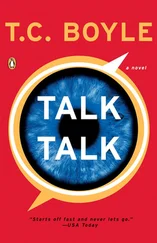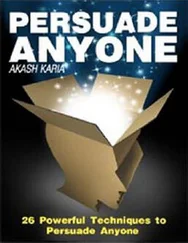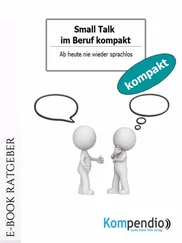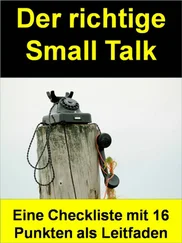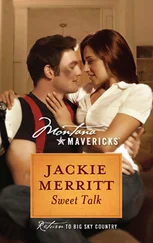● If someone gives you their title, they expect you to use that too (e.g. ‘Dr Chen’).
● Someone with a more senior position in an organization might prefer to use last names.
● Repeat the person’s name as soon as you can.
● If you didn’t catch someone’s name, ask for it again.
● Say something about your name to help people to remember it.
Remember this! Business card etiquette
● Exchanging business cards should be part of the conversation. Generally, people don’t hand out cards until they have been introduced.
● Take enough cards with you to meetings and events. It is unprofessional to say you don’t have any (more) with you.
● Keep your cards in a case – they stay cleaner. And know where they are. People who can’t find their cards look disorganized.
● Give and receive cards with your right hand. In Asia people often like to give and receive cards using both hands. By showing respect to the cards, you show respect to each other.
● Make sure that your card is the right way round and the right way up when you hand it to the person you are talking to.
● You can add a note to your own card, but it is best not to write on someone else’s, especially in Japan. People there may find this impolite. If you need to write something on it to help you to remember the person, do so later.
● Try to make a positive comment about some aspect of a person’s card, such as the company logo or the colour.
Next steps
You don’t need a large vocabulary to make a good impression during your first introduction. Make sure you can use the key phrases in this chapter so that you have the confidence to talk to people at business and social events.
To help you to prepare, write the phrases that you would like to use on separate cards. On the back of the cards, write key words from the phrases.
For example:

 Go to www.collinselt.com/businessresourcesto listen to the real-life audio for this chapter.
Go to www.collinselt.com/businessresourcesto listen to the real-life audio for this chapter.

My goals
• Greet people I’ve met in the past
• Greet people I haven’t seen for a long time
• Politely admit that I don’t remember someone
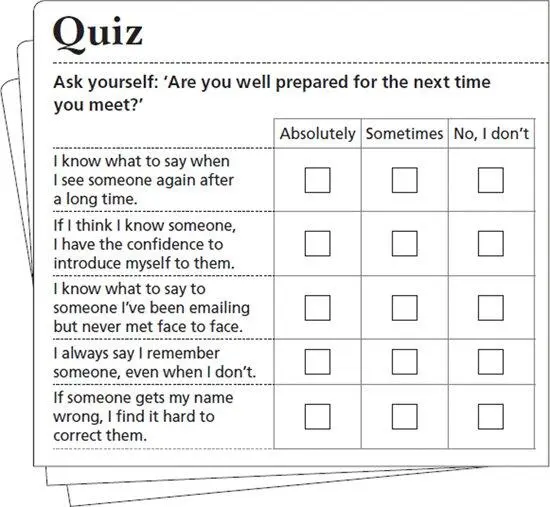
Study focus
In business your first face-to-face contact with someone might come after you have already communicated with that person by email, by phone or even through social media networks. If you have worked in the same industry for a while, you will often meet the same people again and again – sometimes after long periods. The way you greet these people will be different from the way you greet a stranger. It is a good idea to remind them of your relationship.
Key phrases
Meeting someone you know unexpectedly
It’s Katsumi, isn’t it? I’m Sue Jones. We met last May.
You’re Katsumi, right? Sue.
Meeting someone you know after a long time
Long time no see! / How are you/things? / How have you been?
Responding
That’s right.
I’m great/good. How about you?
Good to see you again.
Meeting someone you ‘know’ but have never met
You must be Paul. I recognize you from your website.
You must be Paul. I recognized your voice immediately!
It’s so great/good/nice to finally meet you.
(It’s) great/good/nice to meet you at last.
I can’t believe we haven’t met before.
Admitting you don’t remember someone
I’m sorry, but can you jog/refresh my memory?
I’m really sorry, but what was your name again?
I’m sorry. Where was it we met?
Correcting someone if they get your name wrong
Actually, it’s Mark.
Actually, I don’t think we’ve met.
Apologizing
I’m sorry. I remember now. How could I forget!
Oh, I’m so sorry! I thought you were someone else.
 Go to www.collinselt.com/businessresourcesto listen to the key phrases.
Go to www.collinselt.com/businessresourcesto listen to the key phrases.
Scenarios
Mary: It’s Katsumi, isn’t it? Mary. We met last May.
Katsumi: I’m sorry, but can you jog my memory?
Mary:Mary Smith. We met at the conference in Brighton. I used your mobile phone when my battery ran out.
Katsumi:Oh, Mary! Of course. I’m sorry. How could I forget!You used it to call friends in Australia.
Mary:I called a taxi!
Katsumi:Just kidding. It’s good to see you again.How are you?
Mary: I’m good,really good. How about you?
Paula:Hi. You must be Ghada.
Ghada: That’s right.
Paula: I recognize you from your photo on the website.I’m Paula, from Marketing.
Ghada:Paula! Of course. It’s so good to finally meet you. How are things?
Paula:Great. I can’t believe we haven’t met before.
Ghada:Me neither.
Beate: You’re Martin, right? Beate.From Switzerland.
Mark: Actually, it’s Mark. I don’t think we’ve met.
Beate: Oh, I’m sorry! I thought you were someone else.
Mark:No problem. Anyway, it’s nice to meet you. I’m Mark Jones.
Beate:Beate Schmidt.
 Go to www.collinselt.com/businessresourcesto listen to the scenarios.
Go to www.collinselt.com/businessresourcesto listen to the scenarios.
Over to you
1 Put the words in the correct order to make useful expressions. Don’t forget to add punctuation.
1. time / see / no / long
....................................................................
2. see / good / you / again / to
....................................................................
3. have / you / how / been
....................................................................
4. to / so / you / meet / good / it’s / finally
....................................................................
2 Complete the questions with the words in the box.

1. You’re Katsumi,.........................?
2. How are.........................?
3. How have you.........................?
4. How.........................you?
3 There is one word missing in each of the expressions below. Rewrite the expressions with the missing word in the correct position.
1. I’m sorry. How I forget!
....................................................................
Читать дальше
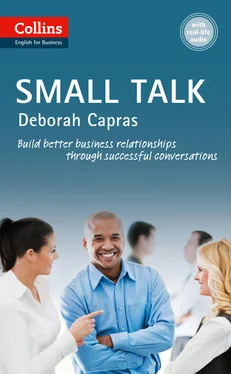

 Go to www.collinselt.com/businessresourcesto listen to the real-life audio for this chapter.
Go to www.collinselt.com/businessresourcesto listen to the real-life audio for this chapter.

 Go to www.collinselt.com/businessresourcesto listen to the key phrases.
Go to www.collinselt.com/businessresourcesto listen to the key phrases. Go to www.collinselt.com/businessresourcesto listen to the scenarios.
Go to www.collinselt.com/businessresourcesto listen to the scenarios.
